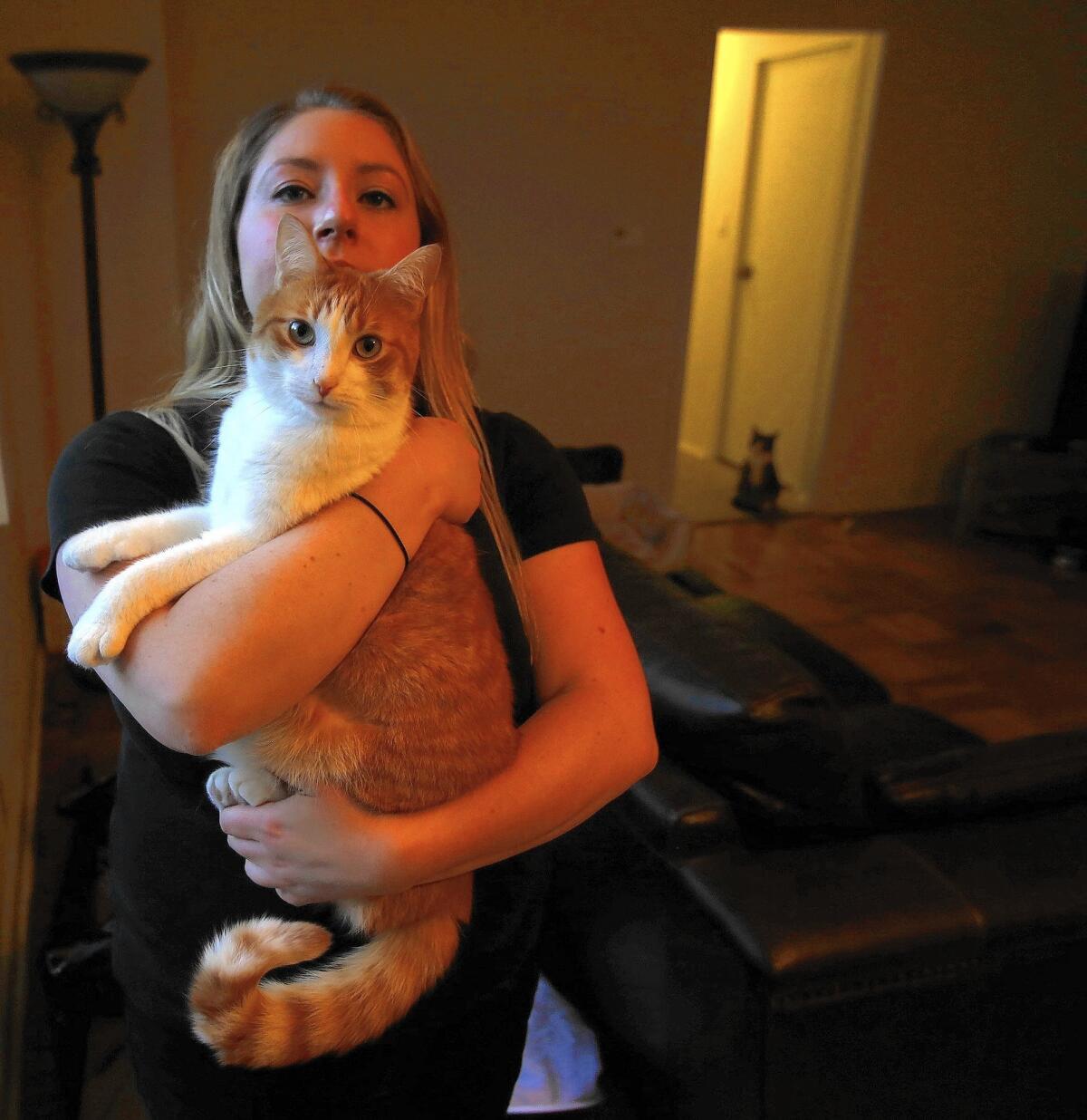Los Angeles police accused of allowing search dog to attack woman’s cat

When Alissa Kirby returned to her apartment in Mid-Wilshire area and found a trail of blood under her bed leading to her 2-year-old tabby, she panicked. She rushed the cat to the emergency veterinarian clinic across town and told the vet her theory: A dog had bitten Butters.
But not just any dog — a police dog; one of the eight that had swept through her building March 10, searching for a possibly armed burglary suspect. The next morning, a veterinarian confirmed that the puncture wounds on the right side of Butters’ chest were three obvious teeth marks, farther apart than an average-size cat’s teeth and consistent with a bite wound.
The Los Angeles Police Department has launched a formal investigation into Kirby’s allegation that her cat was attacked by a dog from the K-9 unit, resulting in nearly $1,000 in veterinarian bills.
Although Kirby filed a complaint the week of the incident, she still hasn’t been given an official explanation. She plans to file a claim for damages against the LAPD, but said her focus is on finding out who is responsible.
“I think as officers of the law, they should be accountable and they should be held to a higher standard than ordinary citizens because they’re supposed to be protecting us,” Kirby said. “Not invading my home, attacking my pet and then leaving with no word.”
Lt. Michael Carodine, head of the Metropolitan Division’s K-9 unit, said he couldn’t comment because of the ongoing investigation. But in an interview before he was aware of the inquiry, Carodine said the department’s dog handlers are required to report any such incidents. On that particular day, he said, there were no reports of a police dog biting a cat.
As far as he knew, Carodine said, “that didn’t even occur.”
The day of the incident, Kirby’s apartment building was shut down while the K-9 unit searched for a burglary suspect. Each of several search teams consisted of a dog, a handler and three officers, and the dogs worked off-leash, in line with policy.
In the nearly two years that he’s headed the division, Carodine said, there has only been one incident of contact with an animal, in which a dog guarding its puppies attacked the police dog first. Although it seldom happens, he said, contact with a pet is still a possibility.
“Even though the dogs are trained a particular way, the bottom line is it’s still an animal and animal instinct does have a tendency to kick in,” Carodine said. “But that’s why we put so much time and effort into how we train our dogs so it’s not an issue.”
The search dogs, a mix of Belgian Malinois and Dutch Shepherds, have been trained to find suspects and then bark to alert officers, Carodine said.
At that point, the handler secures the dog while officers make contact with the suspect, Carodine said. The LAPD switched to a K-9 “find and bark” policy on orders from the Los Angeles Police Commission, after an eight-month review prompted by allegations that police dogs had mauled hundreds of people.
But Kirby said the training was apparently not working if her cat was attacked by a police dog. In addition to the bite wound, Butters’ lungs were bruised and he needed a stitch in one of his paws after a few of his nails were ripped out.
“Accidents happen, but they need to have a protocol for dealing with this type of thing,” Kirby said. “And if they do, they need to revise it because it’s clearly not working.”
Twitter: @brittny_mejia
More to Read
Sign up for Essential California
The most important California stories and recommendations in your inbox every morning.
You may occasionally receive promotional content from the Los Angeles Times.











